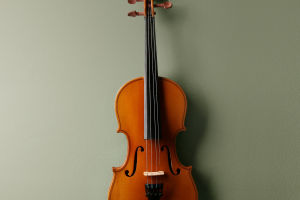The djembe is a traditional West African drum, known for its distinctive goblet shape and powerful, resonant sound.
Whether you’re new to drumming or looking to expand your musical horizons, learning the basic djembe method is an excellent way to start.
This guide will cover the fundamentals of playing the djembe, including its history, proper technique, basic rhythms, and tips for practice.
A Brief History of the Djembe
Before diving into the technical aspects, it's essential to understand the cultural significance of the djembe. The djembe originated among the Mandinka people of West Africa, particularly in present-day Mali, Guinea, and Senegal. It was traditionally played during ceremonies, festivals, and communal gatherings, often accompanied by dancing and other instruments like the balafon and kora. The drum is believed to have spiritual importance, connecting the player with the divine and the ancestors.
The djembe's name is derived from the Bambara phrase "Anke djé, anke bé," which means "everyone gather together." This reflects the djembe's role in bringing communities together through rhythm and music.
Understanding the Structure of the Djembe
The djembe is carved from a single piece of wood, typically from a tree like the lenke or iroko. It has a wide, open top and a narrow base, creating its iconic goblet shape. The drumhead is traditionally made from goatskin, although synthetic materials are sometimes used today. The skin is stretched over the top of the drum and held in place by a series of ropes, which can be tightened or loosened to adjust the pitch.
Basic Techniques
Playing the djembe requires mastering three primary hand techniques: bass, tone, and slap. Each technique produces a different sound and is fundamental to playing rhythms.
1. Bass (Gun):
The bass sound is deep and resonant, produced by striking the center of the drumhead with the flat of your palm. To achieve a good bass tone, keep your fingers together, lift your hand slightly off the drumhead immediately after striking, and ensure that the hand is relaxed.
2. Tone (Go):
The tone is a higher-pitched, open sound made by striking the drumhead near the edge with the pads of your fingers. Your fingers should remain straight and together, and your palm should not touch the drumhead. Like the bass, it's crucial to let your hand bounce off the drumhead after the strike.
3. Slap (Pa):
The slap is a sharp, cracking sound produced by striking the edge of the drumhead with your fingers slightly splayed. This technique requires practice to master, as it involves controlled hand movements to achieve the desired sound. The key is to relax your hand and allow the fingers to naturally bounce off the drumhead.
These three sounds—bass, tone, and slap—form the foundation of djembe playing. They are often represented in notations as "Gun," "Go," and "Pa," respectively.
Basic Rhythms
The djembe is known for its complex and varied rhythms. As a beginner, it's best to start with simple patterns and gradually build up to more intricate ones. Here are a few basic rhythms to get you started:
1. Kuku:
Originally from Guinea, Kuku is a popular rhythm played during celebratory events. The basic pattern involves a sequence of tones and slaps, alternating between the dominant and non-dominant hands.
Pattern: Go-Go-Pa, Go-Go-Pa, Pa-Go, Pa-Go
2. Dununba:
Dununba is a powerful, slower rhythm traditionally played during strength competitions. The rhythm primarily uses bass tones, emphasizing the deep, resonant sound of the drum.
Pattern: Gun-Gun-Go, Gun-Gun-Go
3. Yankadi:
Yankadi is a rhythm from Guinea, often associated with courtship and love. It has a smooth, flowing pattern that alternates between tones and slaps.
Pattern: Go-Pa-Go, Go-Go-Pa
These rhythms can be practiced individually or combined to create more complex patterns. As you become more comfortable with the basics, you can start experimenting with variations and improvisations.
Tips for Effective Practice
1. Start Slowly:
Focus on accuracy and consistency rather than speed. Gradually increase the tempo as you become more comfortable with the rhythms.
2. Use a Metronome:
Practicing with a metronome helps you maintain a steady tempo and develop a strong sense of timing.
3. Listen to Recordings:
Listening to traditional djembe music can help you understand the nuances of rhythm and inspire your playing.
4. Join a Drum Circle:
Playing with others in a drum circle or class can enhance your skills and expose you to different rhythms and techniques.
5. Regular Practice:
Like any musical instrument, regular practice is essential for improvement. Set aside time each day to play and refine your technique.
Learning the basic djembe method is a rewarding journey that connects you with a rich musical tradition. By mastering the fundamental techniques, practicing basic rhythms, and staying dedicated to regular practice, you’ll find yourself growing as a drummer. Whether you’re playing for personal enjoyment or as part of a group, the djembe offers a powerful and expressive way to make music and connect with others.


